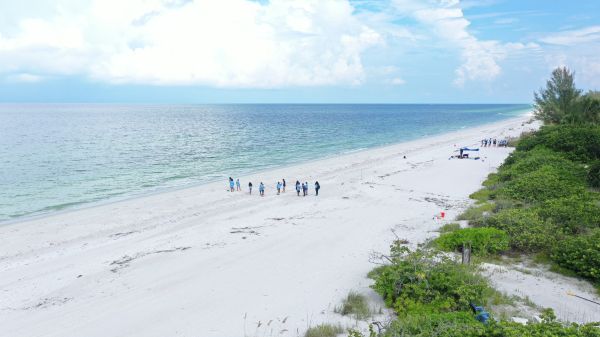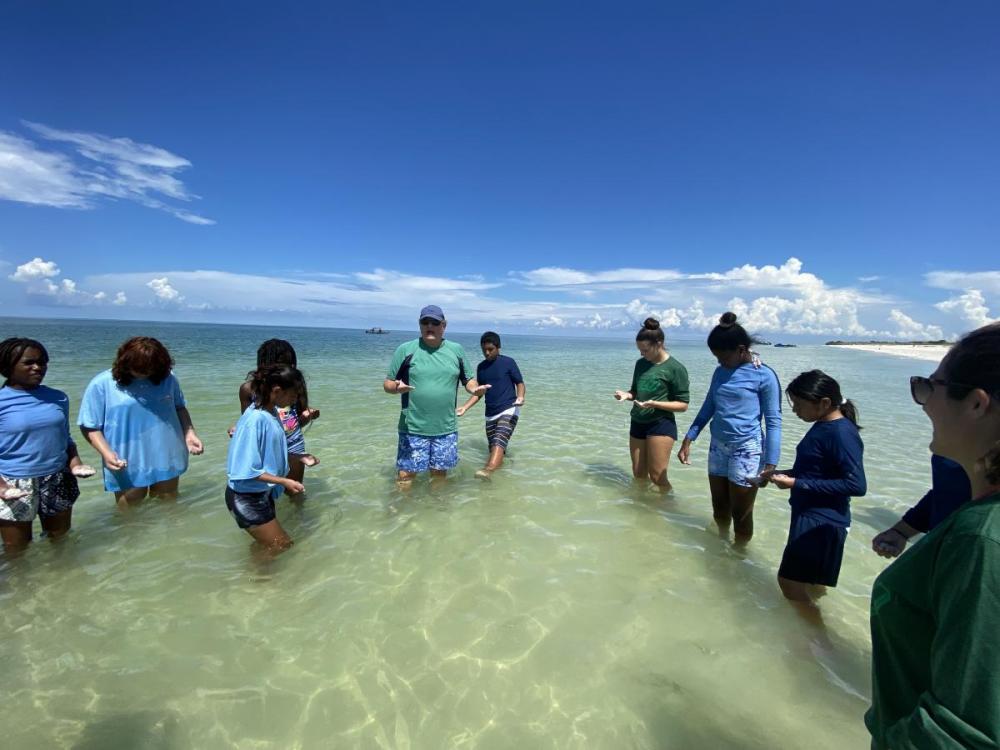Coastal Perspectives in EE: Center for Environment and Society, Florida Gulf Coast University

By: Kara Nunnally, eeRESEARCH Library Associate, Duke University Nicholas School of the Environment
This post is part of a series on EE practices for coastal resilience in the United States. In collaboration with NAAEE, Duke University is showcasing EE practices and advice from organizations on each coast while highlighting relevant research to help EE practitioners learn from academic literature.
I had the pleasure of speaking with the Director of the Center for Environment and Society and Associate Professor, Dr. Jennifer Jones, and Associate Professor of Environmental Education, Dr. Heather Skaza Acosta. Their insight and experience at Florida Gulf Coast University exemplify the impact colleges and universities can have in EE through generating meaningful community engagement and training effective nonformal educators.
The Center for Environment and Society (Center) is part of The Water School at Florida Gulf Coast University in Fort Myers, Florida, and serves five counties in the area with three situated adjacent to the Gulf. The Center has a vision for Southwest Florida “that promotes the interconnectedness of natural and social systems required to create a healthy and resilient environment for the benefit of all.” In line with its vision, the Center is an interdisciplinary hub with an ethos of outdoor learning that collaborates with the community, trains educators and students, and develops curriculum. A community of practice is at the heart of the Center. It leverages community partnerships with natural scientists and climate change experts, non-profit organizations, and a network of environmental educators for diverse perspectives regarding what is happening on the ground.
Project WATERS serves a dual purpose to the community as a nonformal educator training program and a K–12 student engagement initiative that is comprised of an after-school program and a week-long program over the summer. This hands-on outdoor program increases content knowledge through lessons and data collection. Like the environmental education undergraduates at the Water School, Project WATERS participants go to the marine field station to work alongside scientists, collect data, and link their learning to the interconnected coastal challenges their community is facing. For Southwest Florida, that includes sea level rise, increased extreme weather, impacts to wildlife (like sea turtle nesting), and saltwater intrusion on vegetation communities.
“The idea is everyone has a responsibility and everyone has a commitment to the program based on their expertise level and the skills and resources that they have, and this is the really meaningful way to build a community of practice around local issues that everyone is able to witness, if they haven’t already.” —Dr. Heather Skaza Acosta
Pairing classroom lessons and data collection provides a real link between what one sees and can collect in the field and developing meaningful models to interpret and represent the impacts of climate change. This process is intended to have students develop action plans. For example, using the local coastal challenge of sea-level rise, the first classroom lesson reviews land ice versus sea ice and its contribution to sea-level rise. So they model a coastline with ice on land and ice in the sea, collecting data over time. Based on that simulation, they build their own coastline and strategize resilient development for coastal communities. In Project WATERS, nonformal educators receive the training by completing a series of online lessons and first participating as the student. Ultimately, this type of extended learning activity builds confidence for nonformal educators to implement complex science content in their programming for student groups. Further, high school students who have been through the program are then promoted to mentors for younger participants. “The idea is everyone has a responsibility and everyone has a commitment to the program based on their expertise level and the skills and resources that they have, and this is the really meaningful way to build a community of practice around local issues that everyone is able to witness, if they haven’t already,” said Dr. Acosta.

Dr. Jones feels that building an ethos of outdoor learning and infusing EE in the community will help influence education policy for formal school settings. The EE field has been advocating for more financial support to increase opportunities for students to get outside. Dr. Acosta believes the best way to have an impact on a larger number of participants is professional development for nonformal educators who will pass that knowledge to their students. Together, these EE principles position the Center as a resource and partner to develop a more resilient future for coastal Florida communities.
Summaries Cited:
Bodor, S. (2021 June 25). Outdoor policies prevail in state legislatures. NAAEE. https://naaee.org/eepro/blog/outdoor-policies-prevail-state
Hill, A. (2013). The Place of Experience and the Experience of Place: Intersections Between Sustainability Education and Outdoor Learning. Australian Journal of Environmental Education, 29(1), 18 - 32. presented at the 2013/07//. Retrieved from http://search.proquest.com/docview/1428502678/abstract/8D95BBF7CC5407BPQ/1
Mintz, K., & Tal, T.. (2018). The place of content and pedagogy in shaping sustainability learning outcomes in higher education. Environmental Education Research, 24(2), 207 - 229. presented at the 2018/02/01/. Retrieved from https://doi.org/10.1080/13504622.2016.1204986
Monroe, M. C., Plate, R. R., Oxarart, A., Bowers, A., & Chaves, W. A.. (2019). Identifying effective climate change education strategies: a systematic review of the research. Environmental Education Research, 25(6), 791 - 812. presented at the 2019/06/03/. Retrieved from https://doi.org/10.1080/13504622.2017.1360842
Monroe, M. C., Ballard, H. L., Oxarart, A., Sturtevant, V. E., Jakes, P. J., & Evans, E. R.. (2016). Agencies, educators, communities and wildfire: partnerships to enhance environmental education for youth. Environmental Education Research, 22(8), 1098 - 1114. presented at the 2016/11/16/. Retrieved from http://dx.doi.org/10.1080/13504622.2015.1057555
NAAEE. (2021 July 26). Advancing environmental & outdoor learning using federal, state, and local funding. https://cdn.naaee.org/sites/default/files/advancing_environmental_outdoo...
Rios, J. M., & Brewer, J.. (2014). Outdoor Education and Science Achievement. Applied Environmental Education & Communication, 13(4), 234 - 240. presented at the 2014/10/02/. Retrieved from http://dx.doi.org/10.1080/1533015X.2015.975084
Tomas, L., Girgenti, S., & Jackson, C.. (2017). Pre-service teachers’ attitudes toward education for sustainability and its relevance to their learning: implications for pedagogical practice. Environmental Education Research, 23(3), 324 - 347. presented at the 2017/03/16/. Retrieved from http://dx.doi.org/10.1080/13504622.2015.1109065


